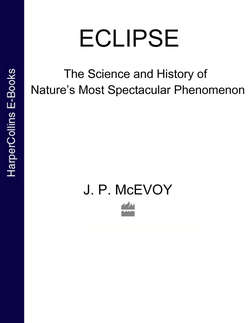Читать книгу Eclipse: The science and history of nature's most spectacular phenomenon - J. McEvoy P. - Страница 22
THE ECLIPSE ARCHIVE FROM BABYLON
ОглавлениеThe astronomical texts, records of observations and predictions, reveal that through centuries of pre-eminence under the Chaldean dynasties, and even during later periods of decline, celestial observations continued to be made at Babylon on a regular basis and with little change of pattern. Modern scholars estimate that the programme lasted almost eight hundred years, until after the time of Christ. The most recent surviving astronomical text dates from AD 75, an almanac prepared from contemporary observations. Thus, from 750 BC to AD 75, there exists an archive of what the observers of Babylon saw in the heavens and recorded on clay tablets.
To put this achievement into perspective, consider an equivalent project to make similar observations at Windsor Castle, starting at about the time of the castle’s construction in the early thirteenth century. This was the time of Richard the Lionheart and the Magna Carta. If the continuity of the Windsor ‘archives’ were to match Babylon’s, the skywatching would still be going on today, as the twentieth century gives way to the twenty-first. The observations would have continued through the reign of the Plantagenets and the War of the Roses, Elizabeth and the Spanish Armada, the Civil War and the Restoration. Perhaps in the late seventeenth century the observations would have been taken over by the Astronomer Royal, and examined by Isaac Newton and Edmond Halley. During Victoria’s reign the project would no doubt have been supervised by Prince Albert, science enthusiast and overseer of great civic works. Finally, in the twentieth century, astronomer-priests would get deferments from the Great War, survive the blitz of the Luftwaffe and even the celebrations marking the dawn of the new millennium.
Figure 2.3. A Babylonian cuneiform text: an astronomical diary from 164 BC (British Museum).
British Museum, London
The priests and scholars responsible for this remarkable coordinated programme have been called the Babylonian watch-keepers. Their main motive for skywatching at Babylon was no doubt astrological; they generalised the observations to produce almanacs that were used for astrological predictions. Nevertheless, as the centuries passed and mathematical models were applied to reproduce past observations and predict future movement of celestial bodies, the cult of astrology came more and more to resemble astronomy.
